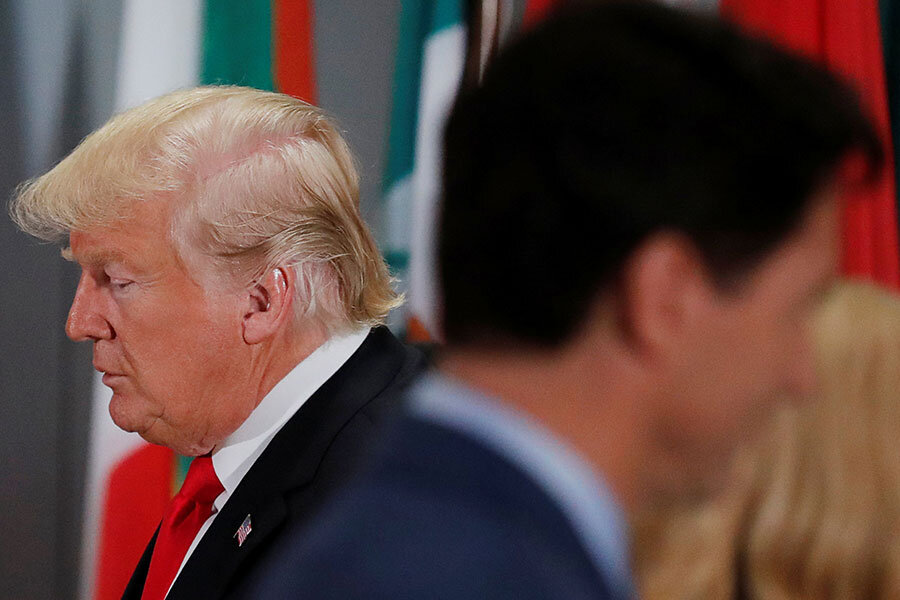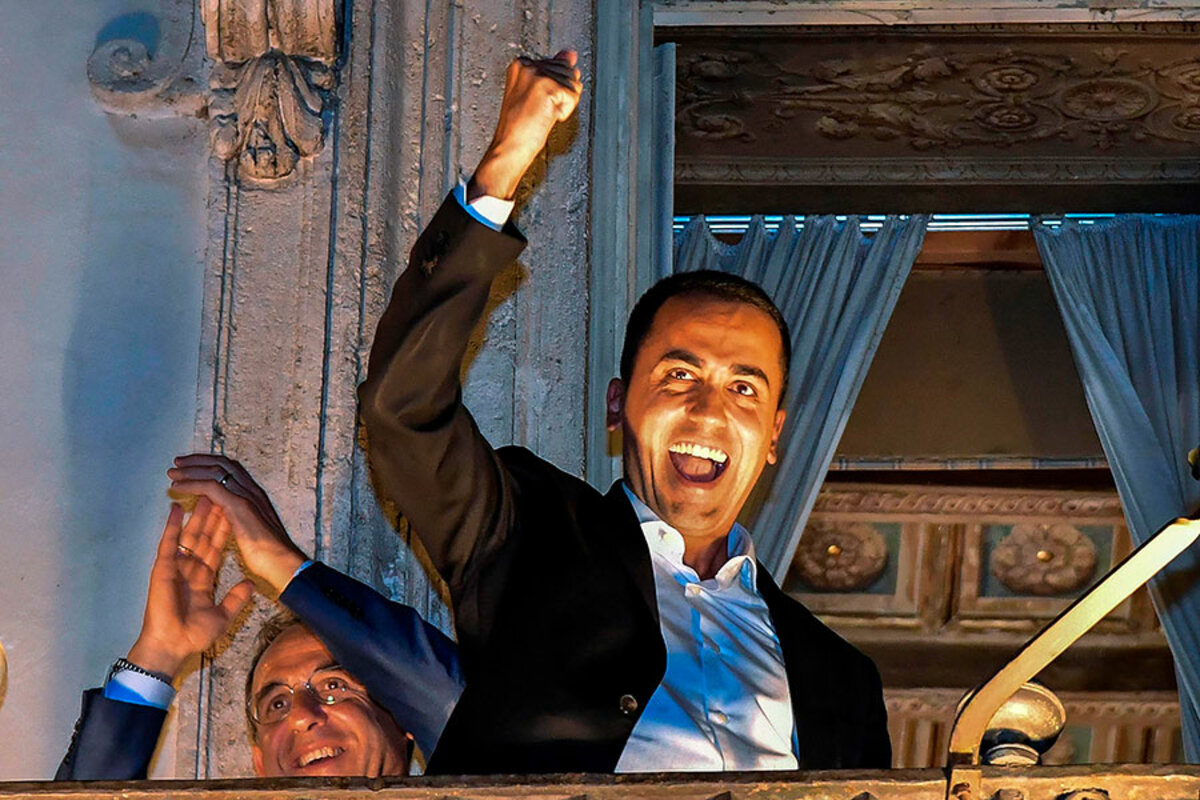In global disputes, political calculus is bumping into economic reality
Loading...
| London
Whether you’re in Washington or Ottawa, Rome, Ankara or Beijing, you’re getting new reasons to question an old assumption: that world affairs are essentially a matter of world politics, and what political leaders say and do.
Almost with each passing day, we are now seeing evidence of leaders engaged in a delicate calculus, having to balance their political agendas against a common limiting force: hard economic reality.
That’s what has been happening in a series of international disputes, including the standoff between Turkish President Recep Tayyip Erdoğan and US President Trump and, with far wider implications, the escalating trade and tariff battle between America and China. Yet in two other dramatic showdowns – one of them just recently resolved, the other with no exit yet in sight – the effect has been particularly stark.
The first dispute was surprising for happening at all: between the US and Canada, its neighbor and historical ally. The politics were fairly straightforward. For Canadian Prime Minister Justin Trudeau, the obvious political move, amid increasingly truculent pressure to accept Washington’s terms for a revised North American trade agreement, was to hang tough. After a Group of Seven summit in June, he declared: “As Canadians, we are polite. We’re reasonable. But also, we will not be pushed around.”
And his country had his back. Polls showed a hefty majority of Canadians blamed President Trump for the acrimonious state of affairs, and even opposition politicians supported Mr. Trudeau’s firm response, especially given Trump’s rationale – he cited national security – for including Canadian exports in steep new tariffs on steel and aluminum.
In the end, however, economic reality counted most. Facing a deadline to sign up to the updated NAFTA – including a provision giving US dairy producers greater access to the Canadian market, something Mr. Trudeau knew could anger his own farmers in Quebec ahead of a national election next year – he signed on. Part of this, no doubt, was Mr Trump’s threat of further tariffs directed at Canada’s auto industry, potentially imperiling tens of thousands of jobs. But the broader economic reality was that without a deal, especially once Washington had separately come to terms with Mexico, Trudeau risked uncertainty, and perhaps serious disruption, in trade with the US, where about three-quarters of Canada's exports go.
The second – unresolved – clash is between Italy and the EU, of which it is a founding member. The politics on Italy’s side were best summed up in a dramatic news photo at the end of last month. It showed Luigi di Maio, the head of the populist Five Star Movement and deputy prime minister, emerging with a broad grin and his arm raised in triumph after winning approval for the country’s new budget. It includes funding for his party’s key campaign promises: tax cuts and a guaranteed minimum “citizen’s income” for Italy’s poor.
Since those vote-winning programs are also expensive, the budget breaches the EU’s debt-and-deficit limits, particularly a provision committing member states to aim for a maximum debt level of 60 percent of their GDP. Yet Di Maio and his coalition partners, the right-wing League, seem in effect to be daring the European Union to exercise its veto over the proposed budget, figuring that the alliance will not want to risk emboldening euroskeptics in other member states ahead of next year’s European Parliament elections.
Still, what happens in the weeks ahead could also hinge on economic reality. Italy’s economy is the fourth largest in the EU. Its debt-to-GDP ratio is already at around 130 percent, the second-highest in the EU single market after Greece, and Italian financial markets have been hit hard since the budget announcement.
As for the EU, it has to reckon with the fact that the Italians are not just part of the single market, but of its shared currency: the euro. The debt-and-deficit framework, though initially put in place in the late 1990s, was deliberately toughened in the wake of the 2008 financial crash, when the near-collapse of the Greek economy raised the prospect of undermining the stability of the central currency itself. Whatever the political risks in taking a hard line now on Italy, the EU may figure the economic dangers of inaction are even greater.







